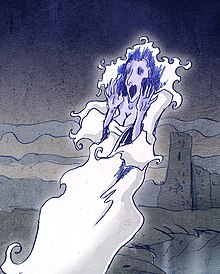Several years back, my family had the opportunity to participate in a Children's Memorial food allergy benchmarking study. (There's more about that in my post on FAHF-2
here if you're interested.) One of the really great things about the study was that we often got to meet other food-allergic families in the waiting room, awaiting their turn for poking, prodding, scratching and blowing into tubes.
Most were great, but I do remember one mother leaning over and asking "what is your son allergic to?" I rattled off the list of allergies. She then said "My daughter is allergic to cashews.
Deathly allergic. She has a RAST score that's over 100!" I must have looked puzzled because she followed up with "It's off the charts!"
I was feeling pretty weirded out at that point because she was so ebullient about it all, but I waded in anyway. "You do know that RAST measurement has nothing to do with the severity of an allergy, right?" I said. "Its real purpose is for initial diagnosis, and then to determine the pattern of a child's immune response."
She bristled a little at this point. She was clearly not going to give up on the idea of her daughter being a outstanding test taker. "That's not true," she asserted. "The higher the number, the more allergic the child!"
((sigh)) What is it about our competitiveness with our children that makes us extend it even to their
medical test scores? I was not a bitch that day - I let it go - but it's bugged me ever since because it's a very common misconception in our community. In the interest of getting it out of my system, let me explain what I know about RAST testing.
When a person becomes sensitized to an allergen, the body produces a "soldier" molecule called an antibody that grabs on to the allergen as soon as it comes into the body. A RAST test simply measures the number of these antibody soldiers floating around in the blood. (Wikipedia has a
good summary if you're new to all of this.)
Once a certain number of antibodies are running around, there's a much higher likelihood that the "soldiers" are really there to cause problems. Doctors use what's called a
Positive Predictive Value (PPV) to determine how big the "army" needs to be to predict a true allergy. Each type of allergenic food has a different PPV:
| 95% PPV (kU/L) | Note that these values are different than class references. Classes are ranges specific to the type of analyzer on which these tests are run, making it difficult to compare results from different analyzers/labs.
It's much clearer to refer to your child's RAST test numbers using the quantitative values ("a RAST of 30kU/L to fish", rather than "Class 3 to fish"). |
Egg | 7 |
Milk | 15 |
Peanut | 14 |
Fish | 20 |
Soy | 65 |
Wheat | 80 |
Nonallergic people don't have standing immune armies to foods. However, just about
everyone will show small levels of sensitivity to a few environmental or food allergens on a RAST test, even though the positive result is under the PPV and has no clinical significance.
In a child with a RAST above the PPV for that particular food, there is a 95% likelihood the child will be allergic. However, that still doesn't determine how his or her body will actually react! Just as with world politics, there are different kinds of immune "armies" in the body. Will the reaction be like the India/Pakistan border skirmishes? North Korean saber rattling? European world war? While we don't know what factors do provoke all-out immune responses, we do know that the size of the antibody army does not determine the aggressiveness of response. Once your child's number is above the PPV for the food, the size of the number no longer matters.
There are also some armies that just never fight, regardless of how large they are. False positives on a RAST are most commonly caused by cross-reactivity with environmental allergies.
A RAST test should only be used in conjunction with a positive history and/or skin prick testing/challenge testing. When doctors see the "large army" on the RAST and the "skirmish" on the skin from an SPT, they can feel pretty confident in saying the child is likely to have a true allergy.
Some children show
many positives. However, some of the positives are simply armies are left over from previous fights, or armies that were formed and never used. It can take a lot of additional testing, history and challenges to determine which antibody armies are really active for these kids. (As I said in a
previous post, if your doctor runs a "full panel" on your child and hands you a long list of positives without further testing or explanation, they are not doing their job!)
Keep in mind that no testing is perfect and challenge tests are the gold standard for determining allergies. These generally aren't done when children are small, both because they cannot articulate their symptoms well and because their immune systems are still developing. However, once a child is of an age to be able to accurately report what he or she is feeling, challenge tests are a very important diagnostic tool. Rather than fearing these as parents, we should
expect them.
So why does your doctor keep doing RAST testing even after your child is diagnosed? For many children, a drop in RAST level may (MAY!) signal the beginning of tolerance. Your doctor may periodically do RAST tests to see what
patterns show up.
This is where I see a lot of heartbreak with parents.
"My daughter's RAST numbers went way up this year" is a common lament on support boards. What you should know is that doctors
expect RAST numbers to grow along with the child. Up until around kindergarten age, RAST numbers continue to climb simply because the child is adding more immune cell to their body.
A high RAST does not necessarily mean your child is in more danger from a serious reaction. A rise in RAST does not mean your child is somehow becoming more allergic!
While we all hope to see a drop in our child's RAST numbers at some point, it also is not the entire story. Doctors now think that tolerance to allergenic foods may depend more on the development of "good" immune molecules like IgG4 than on a decrease in IgE antibodies. Also, tolerance to baked milk and egg proteins does not relate at all to RAST numbers. Children can have a very high RAST and still pass a baked challenge.
Over the years, I've come to look at RAST numbers strictly for their entertainment value. It's a viewpoint I highly recommend. They're certainly not worth crying over...and they're definitely not something to brag about.
Follow me on Facebook for updates!








.png)





.jpg)
